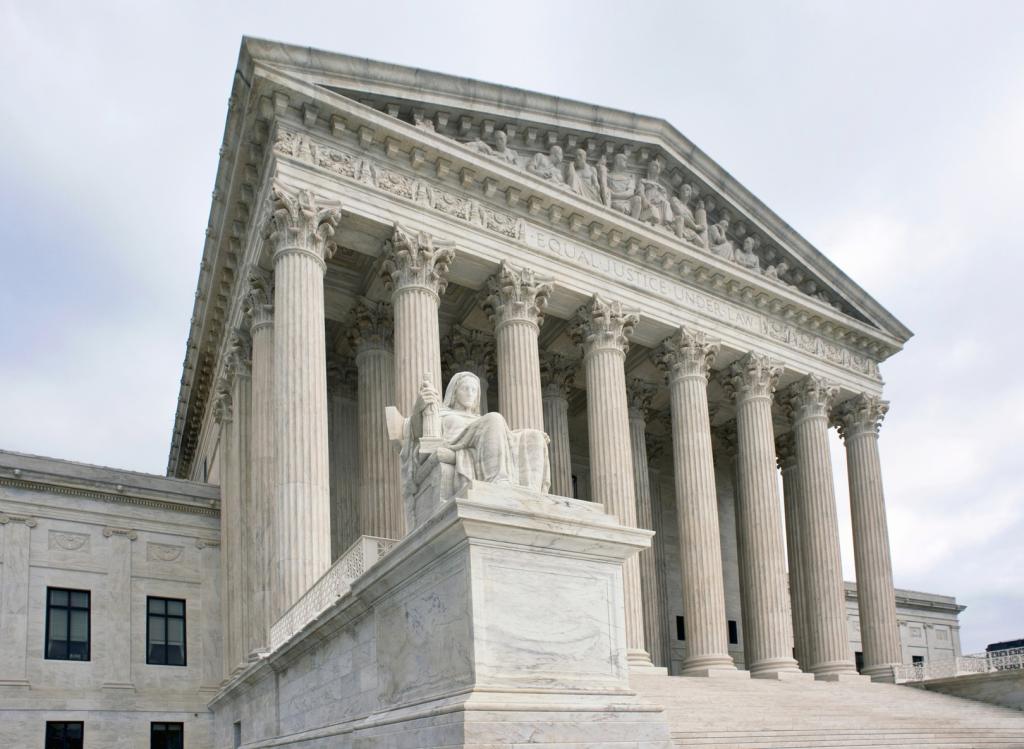June 23, 2020
LGBT Supreme Court Ruling and the Limits of Textualism
Lerner Family Associate Dean for Public Interest and Public Service Law; Professorial Lecturer in Law, George Washington University Law School

This column originally appeared in Bloomberg Law.
The result in the Bostock v. Clayton County U.S. Supreme Court decision is clear: Employers are forbidden by Title VII from firing an employee simply for being homosexual or transgender. The 6-3 vote establishes that as well as other aspects of claim such as that, if the employee’s sex has any role in the discharge, Title VII has been violated.
There is much else to discuss in the three opinions, but I want to focus on only one. On line 10 of the first paragraph of Justice Neil Gorsuch’s majority opinion, he announces his conclusion, and he proclaims that the outcome is “clear.”
He then acknowledges that those who adopted Title VII in 1964 “might not have anticipated their work would lead to this particular result,” and responds that “the limits of the drafters’ imagination supply no reason to ignore the law’s demands.” That is because, when “the express terms” of the statute collide with “extratextual considerations … it’s no contest.”
Same Road, Different Destination
I agree with the majority that the better (correct, if you will) reading of the prohibition against discrimination “because of … sex” is that it applies to discriminations based on sexual orientation and gender preference. But I am troubled by the assertion that the result is clear and by the fact that the two dissenting opinions, also relying on a textualist approach to statutory interpretation, conclude that the result is clear—but in the opposite direction.
The most obvious lesson about textualism from Bostock is that textualism is not a tool that can be easily applied to produce an agreed upon result.
As for easy, the opinions run 172 pages, including a 44-page appendix. As for agreement, the dissents examine the same words as Gorsuch and reach a contrary conclusion. This does not mean that a close examination of the text of a statute is not the proper way for courts to interpret and apply it, but that the approach does not provide anywhere near the certainty that its supporters suggest.
In this respect, textualism is the statutory analog to constitutional originalism and results in the same lack of certainty in its application. For example, in District of Columbia v Heller, 554 U.S. 570 (2008), Justice Antonin Scalia for the majority and Justice John Paul Stevens for the dissent both focused on the same materials from the time of the founding and concluded that an originalist’s interpretation of the Second Amendment produced diametrically opposite conclusions about the constitutionality of the District’s restrictions on handguns—which both thought to be clear in their favor.
Method Used to Reach Result
I do not wish to debate whether originalism or textualism is a proper or even the most proper means of interpreting the Constitution or a statute, but rather I only ask their supporters to acknowledge that method alone cannot answer hard questions.
Turning to Title VII, I find it hard to accept Gorsuch’s conclusion that the outcome is “clear” or that the text “demands” this result, and not primarily because his opinion took 33 pages to prove it. I agree with the justice’s reasoning in rejecting the argument that, because the Congress that enacted Title VII did not envision this outcome, that controls the court if the text is best read to reach a different result.
And I agree with his hypotheticals in which he shows that an employer who fires a man because he is attracted to another man, but does not fire a woman who is attracted to the same other man, has fired the male employee “because of [his] sex,” which is what Title VII forbids.
My question is, how can Gorsuch say that his reading is clear in the face of the two dissents? To pick one example from Justice Brett Kavanaugh’s opinion, for many years the courts of appeals unanimously concluded in 10 different opinions that Title VII did not protect gays and lesbians from employment discrimination.
I do not accept Kavanaugh’s conclusion about the proper meaning of “because of … sex,” but can the meaning of that phrase be so clear that all 30 federal judges who heard those earlier cases would have flunked a course in statutory interpretation for taking the opposite position?
As an advocate, I try not to say something is clear unless I am very sure that I am correct because I do not want to have to answer a judge’s question when she expresses some doubt on the point. Perhaps because Supreme Court justices do not have to worry about that concern, they are willing to find clarity when I would not, but I do not think that is the whole answer.
Rather, I wonder—and it is not based on any hard evidence—whether certainty that a judge has reached the correct conclusion is an essential ingredient in methods of statutory or constitutional interpretation whose supporters promise a certainty, free from the judge’s own preferences, that they cannot deliver.
It’s just an idea, and perhaps someone will show me why I am mistaken.
Alan B. Morrison is the Lerner Family Associate Dean at George Washington University Law School where he teaches constitutional law.
Constitutional Interpretation, Equality and Liberty, Gun Violence Prevention and Second Amendment, LGBTQ Equality, Methods of Interpretation, Supreme Court




